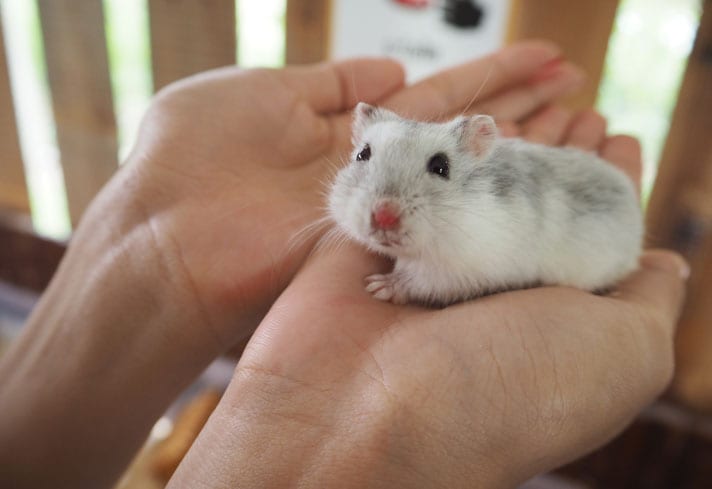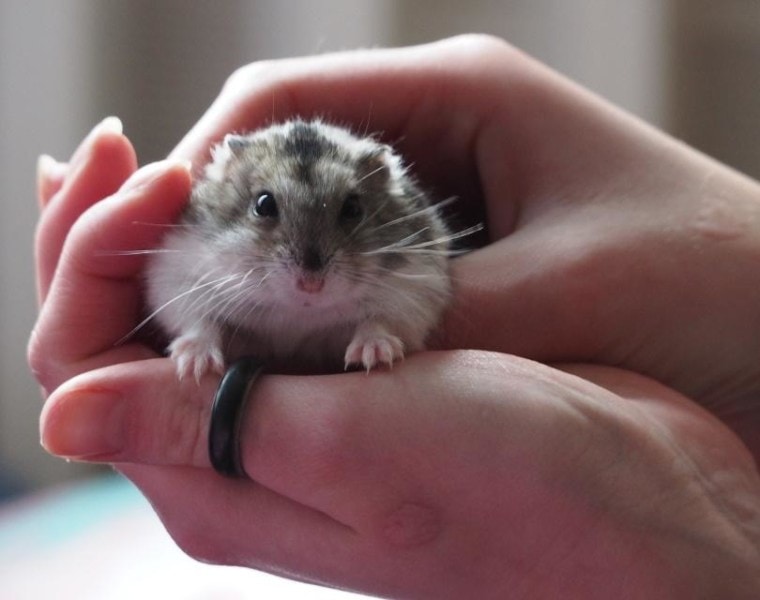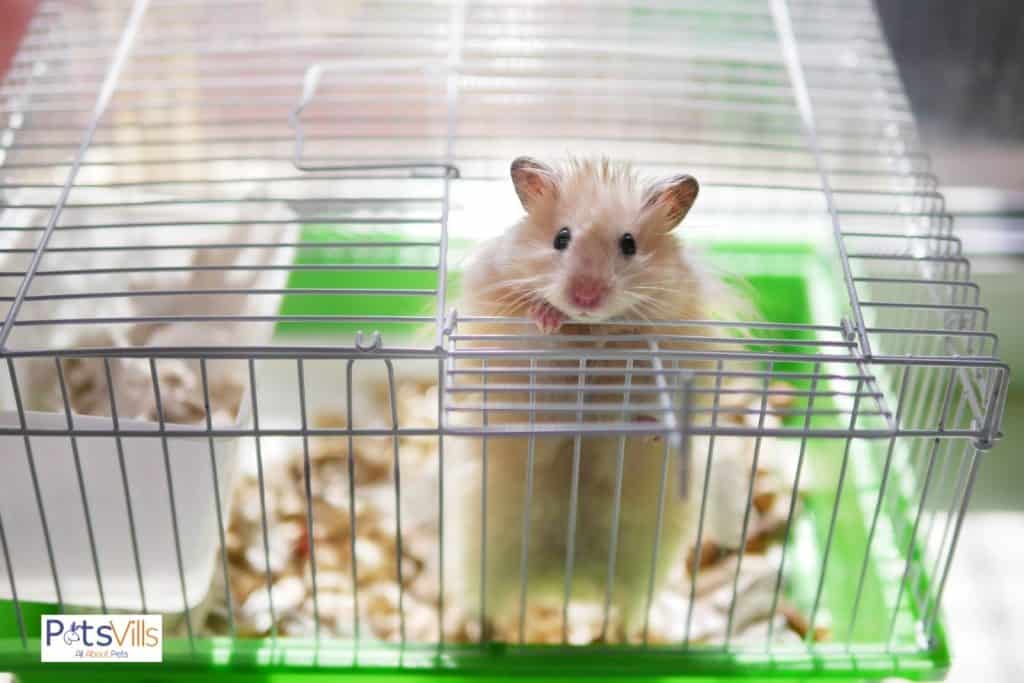Are you a new hamster owner looking to give your furry friend a safe and happy home? Or maybe you’re a seasoned hamster parent looking for ways to improve your handling techniques? Either way, it’s important to understand how to handle and care for your hamster properly to avoid stress or injury. In this blog post, we’ll guide you through the do’s and don’ts of hamster handling, so you can help your little friend feel secure and loved. Let’s get started!

1. Introduction: Importance of Safe Hamster Handling
Hamster owners know the importance of safe handling practices when it comes to these delicate creatures. Starting with the first rule of avoiding startling or frightening your hamster, all the way to safe socialization techniques, the responsibility of keeping your hamster safe and happy lies with you. By following these handling guidelines, the risk of biting or other accidents can be significantly reduced. Remember, hamsters are still animals that react to their environment, so keeping them calm and comfortable is crucial. In this blog, we will discuss the importance of safe hamster handling and how to ensure your furry friend stays healthy and happy while in your care.

2. Rule No. 1: Do Not Startle or Frighten Your Hamster
Hamsters are naturally timid creatures, and handling them can be a bit tricky. However, with the right approach, you can ensure that your hamster becomes comfortable with your presence. Rule No. 1: Do Not Startle or Frighten Your Hamster. Sudden movements or loud noises can send your hamster into a panic, causing it to become disoriented and scared. Instead, approach your hamster slowly and calmly, using a soft voice to soothe it. Allow your hamster to come to you, rather than trying to grab it. If you need to pick your hamster up, do so gently and slowly, supporting its entire body. By making your hamster feel safe and comfortable, you can build a relationship based on trust and affection.

3. Rule No. 2: Do Not Wake Your Hamster Suddenly From Sleep
The second rule for handling hamsters safely is to avoid waking them suddenly from sleep. Hamsters are deep sleepers and sudden awakenings can startle and frighten them. Instead of abruptly waking them up, it is best to gently pet them with a finger or speak softly to them to gradually rouse them from sleep. Hamsters are nocturnal creatures and can be agitated if they are disturbed during their rest time. So, to ensure the bond between you and your furry friend stays strong, it is important to handle them with care. By following this rule, you can avoid any unnecessary stress or aggression from your hamster and have a happy and healthy relationship together.

4. Always Supervise Children While Handling Hamsters
It’s always important to remember that children should never handle hamsters alone or unsupervised. As mentioned earlier, hamsters can be easily frightened or stressed, which can lead to biting or aggression. This is why it’s crucial to always have an adult present when children are interacting with their furry friends. One helpful tip is to encourage children to sit on the floor when handling hamsters, making it less likely for them to accidentally drop or mishandle their pet. Additionally, it’s important to teach children to be gentle and calm when interacting with their hamster, and to never pull or tug on the animal’s tail or limbs. By providing proper supervision and guidance, both children and hamsters can enjoy safe and happy interactions.

5. Use a Dry, Empty Coffee Mug to Teach Children How to Hold Their Hamster
In addition to always supervising children when handling hamsters and minimizing arousal, teaching them the proper way to hold their pet is crucial. One helpful technique is to use a dry, empty coffee mug as a guide. By placing the hamster inside the mug, children learn how to hold their pet securely while minimizing the risk of dropping or squeezing it. Once they gain confidence, they can begin to pick up the hamster with both hands, using one hand to support its bottom. This technique helps to ensure that children develop a gentler touch when handling hamsters and reduces the risk of injury to both the animal and the child.

6. Minimize Arousal and Handle Hamsters Quietly
When it comes to handling hamsters, it is important to minimize their arousal and handle them quietly. Loud or sudden noises can startle hamsters, causing them to become fearful and defensive. This can lead to biting and aggressive behavior, which can be painful for the handler. To avoid this, it is best to approach hamsters slowly and calmly, avoiding sudden movements or loud sounds. Also, it is advised to not wake them abruptly from sleep, as they may become disoriented and agitated. Following these safe handling techniques can make the experience enjoyable for both hamsters and their handlers.

7. Use a Tub to Transfer Hamsters for Taming
Another safe handling technique to consider when taming your hamster is to use a tub. A tub that is big enough for your hamster to move around in can serve as a neutral space for taming. It is important to note that the tub should be clean and dry before using it to transfer your hamster. By allowing your hamster to explore the tub and associate it with positive experiences, you can help build their trust in you. Additionally, using a tub for taming can also make it easier to clean up any messes or spills that may occur during the taming process. Remember to always supervise your hamster during taming sessions and never force them to do anything they are not comfortable with. By using safe handling techniques, you can help create a positive relationship with your hamster and reduce the risk of injury or stress.

8. Offer Your Hamster a Small Treat During Taming
To establish a bond with your hamster, offering treats during taming is a great way to help them become more comfortable around you. As mentioned before, hamsters have a strong sense of smell, so placing a small treat on your palm and offering it to them through the bars of their wire cage can help build trust between you and your hamster. Once your hamster is comfortable taking the treat from your hand, you can start scooping them up for gentle handling. Remember to hold them cupped in one hand while petting them with the other. By offering your hamster treats during taming, you are not only making the process more enjoyable, but you are also building a foundation of trust for future interactions.

9. Handling Hamsters Safely Can Reduce the Risk of Biting
Handling hamsters safely is essential in reducing the risk of biting. Hamsters become defensive when they are snatched out of their cages or roughly handled, causing them to feel threatened. It’s best to avoid startling them by handling them quietly and gently, allowing them to come to you. If necessary, use a scoop to transfer them to prevent any harm to both parties. Washing hands before handling hamsters is essential, as hamsters “see” with their noses and may mistake your scent for food. While wearing thick gloves can offer protection, it’s important to tame them to reduce the likelihood of biting. This can be achieved through talking near them, offering them food and allowing them to become more comfortable in their surroundings. Safe handling practices are crucial in ensuring the well-being of your furry companion.

10. Safe Socialization Tips for Better Access to Your Hamster
The previous sections of this blog have outlined the importance of safe handling techniques for hamsters. Now, let’s focus on safe socialization tips for better access to your hamster. First, remember that every hamster is different and some may take longer to socialize than others. One tip is to start by offering your hamster small treats and interacting with them in short but regular sessions. It’s also important to avoid sudden movements or loud noises, as hamsters can easily become frightened. Encourage your hamster to approach you by gently placing a treat in front of them while they’re in their cage. When handling your hamster, be sure to support their body and never lift them by their tail or whiskers. And always wash your hands before handling your hamster to avoid transmitting any germs. With patience and gentle socialization, you’ll soon have an affectionate and friendly hamster who loves spending time with you.
- Hamster Comparison: Which Breed Is The Perfect Fit For You? - April 15, 2024
- From Price To Value: Understanding The True Cost Of Owning A Hamster - April 15, 2024
- Harmony In Hamster Homes: Exploring Hamster Compatibility With Other Pets - April 15, 2024